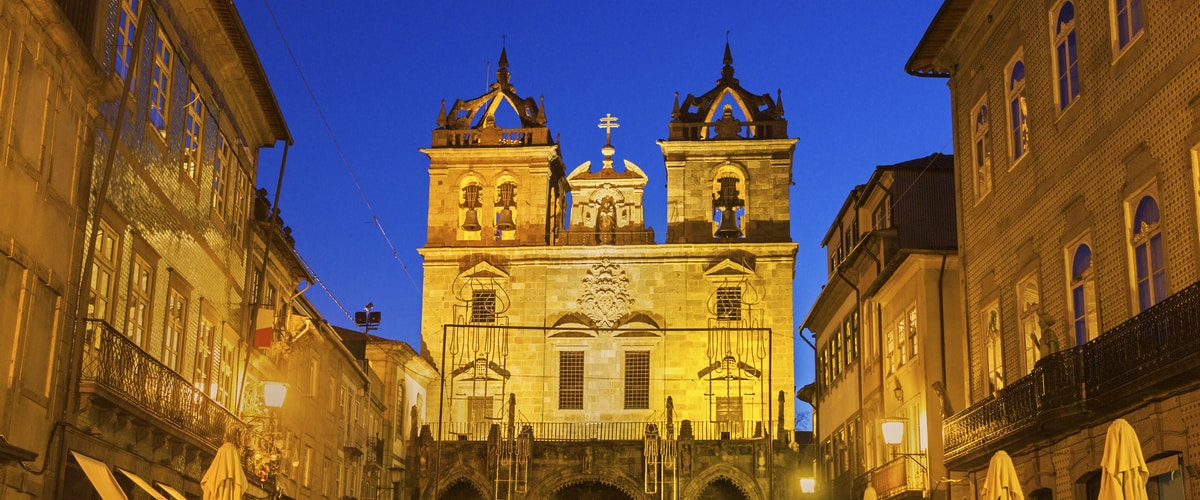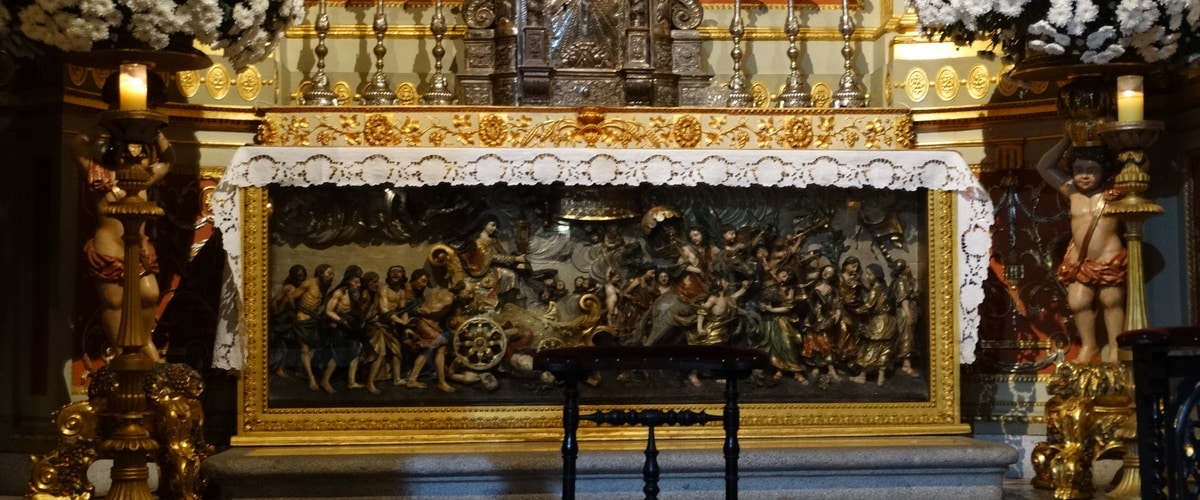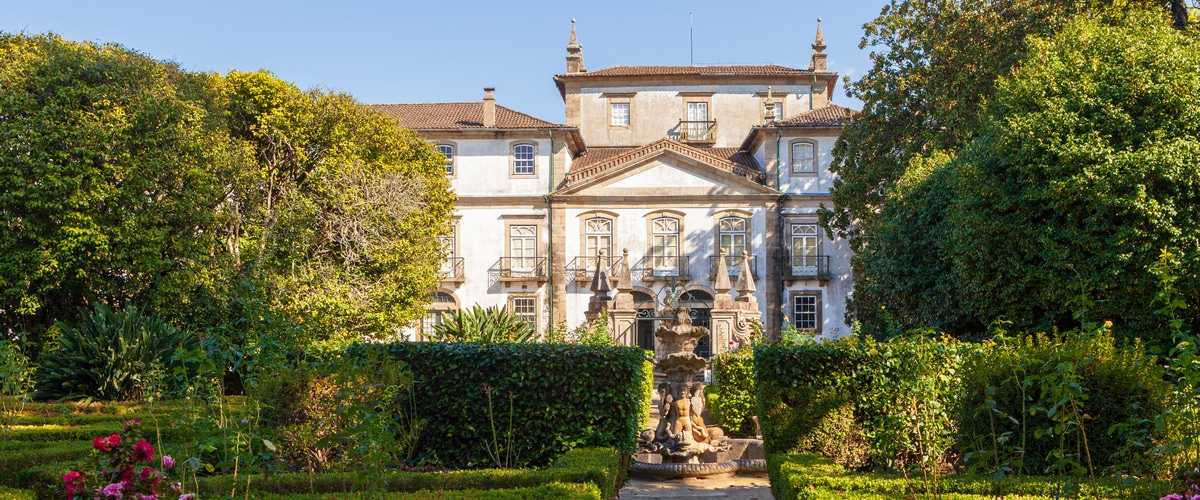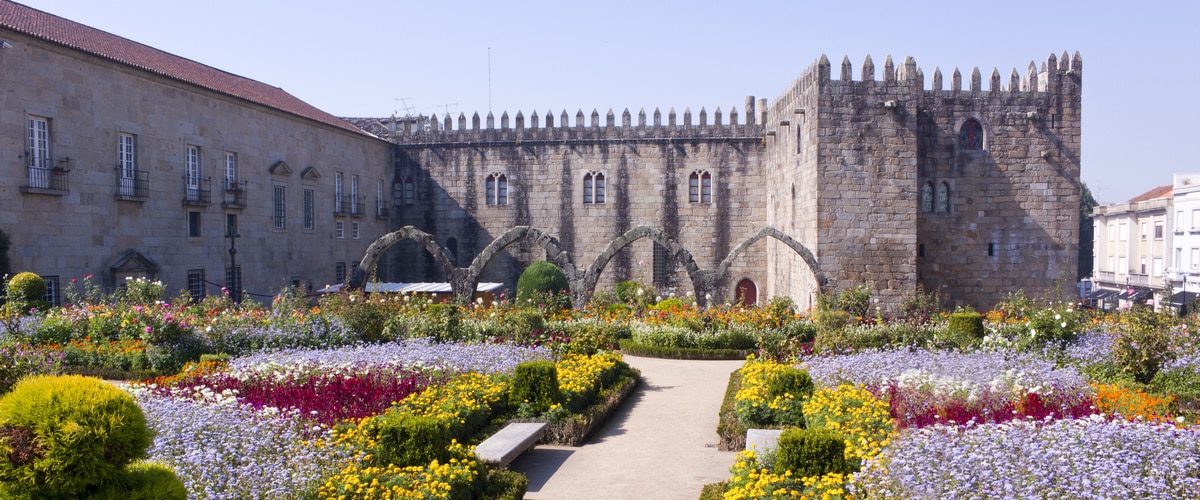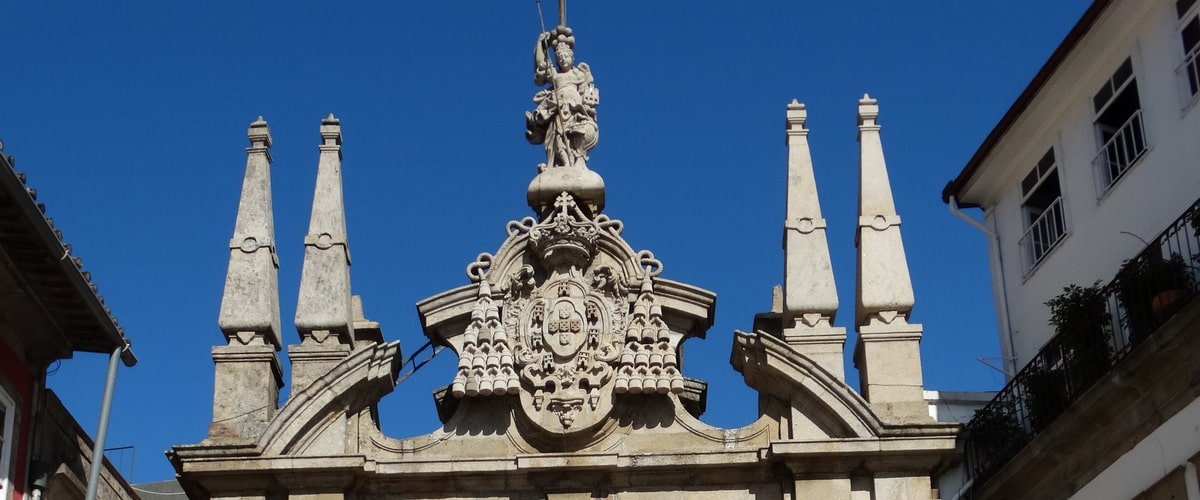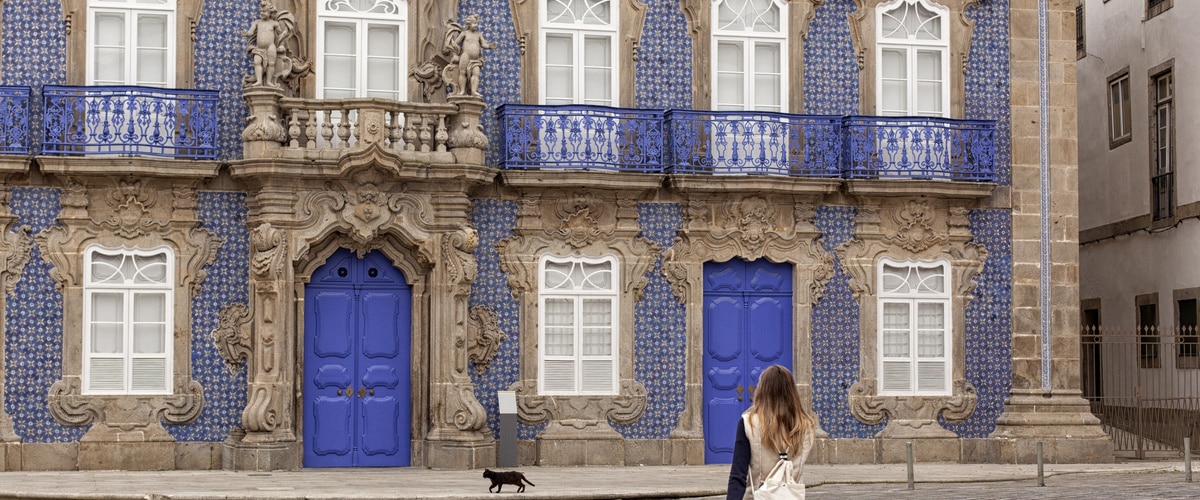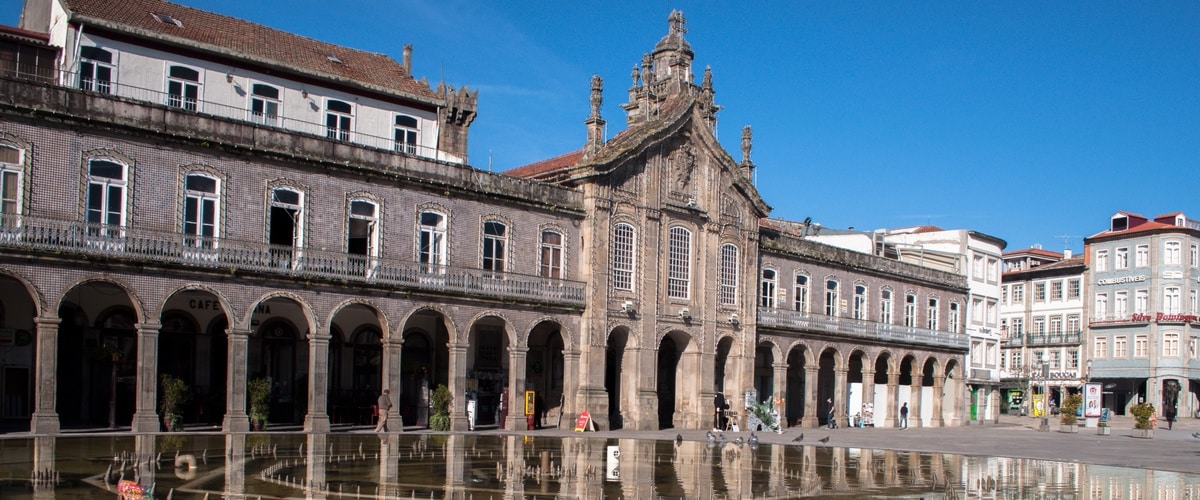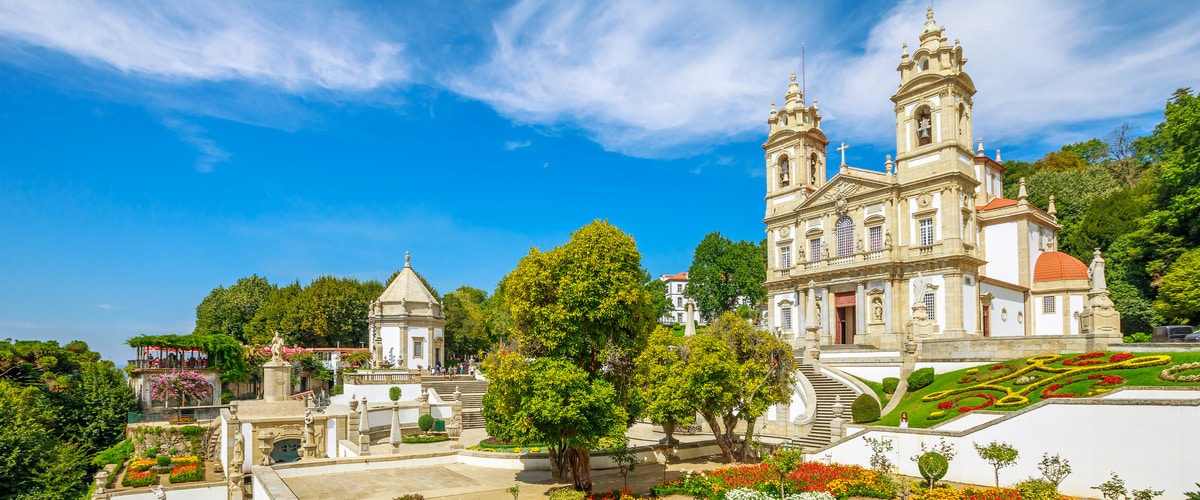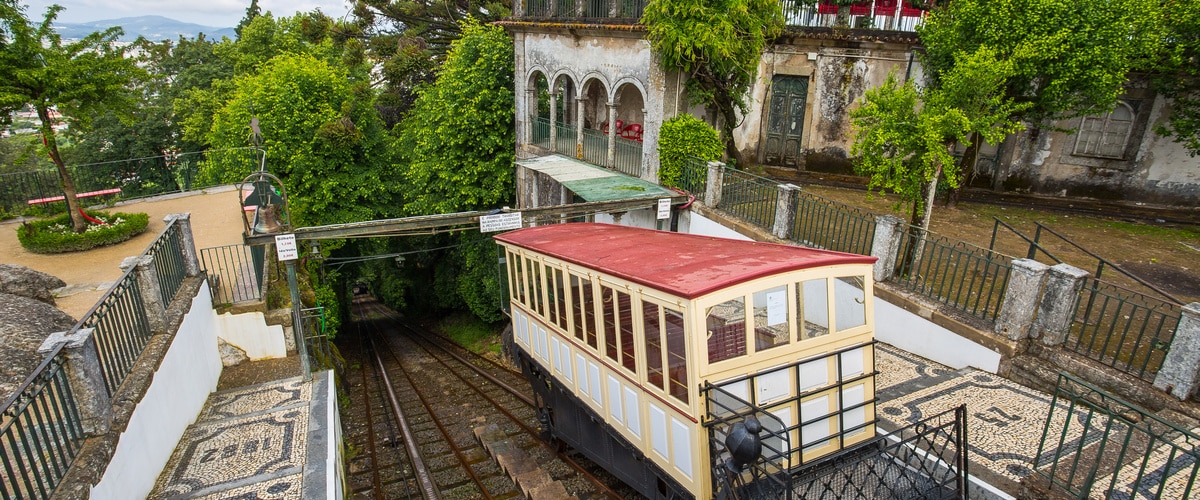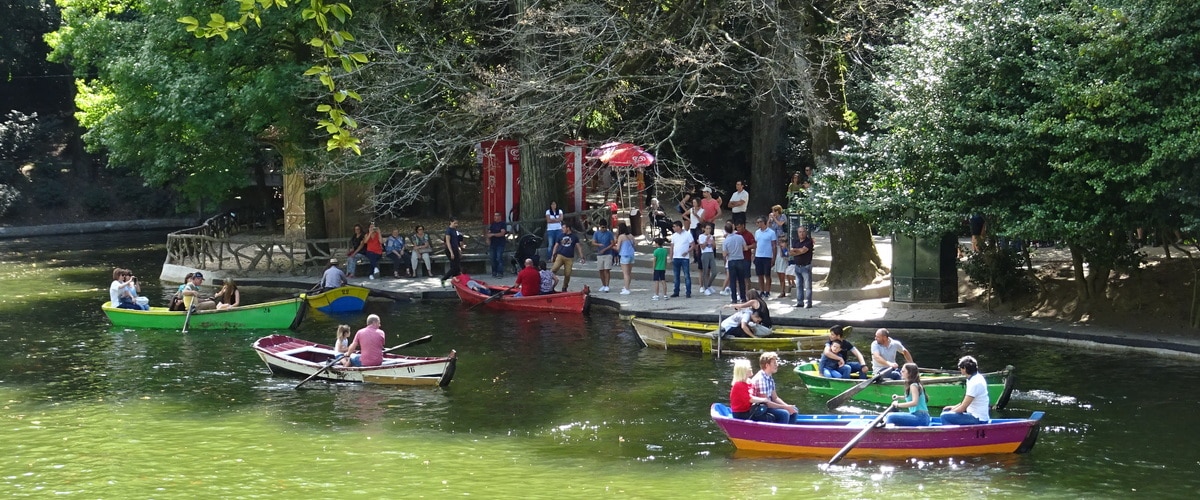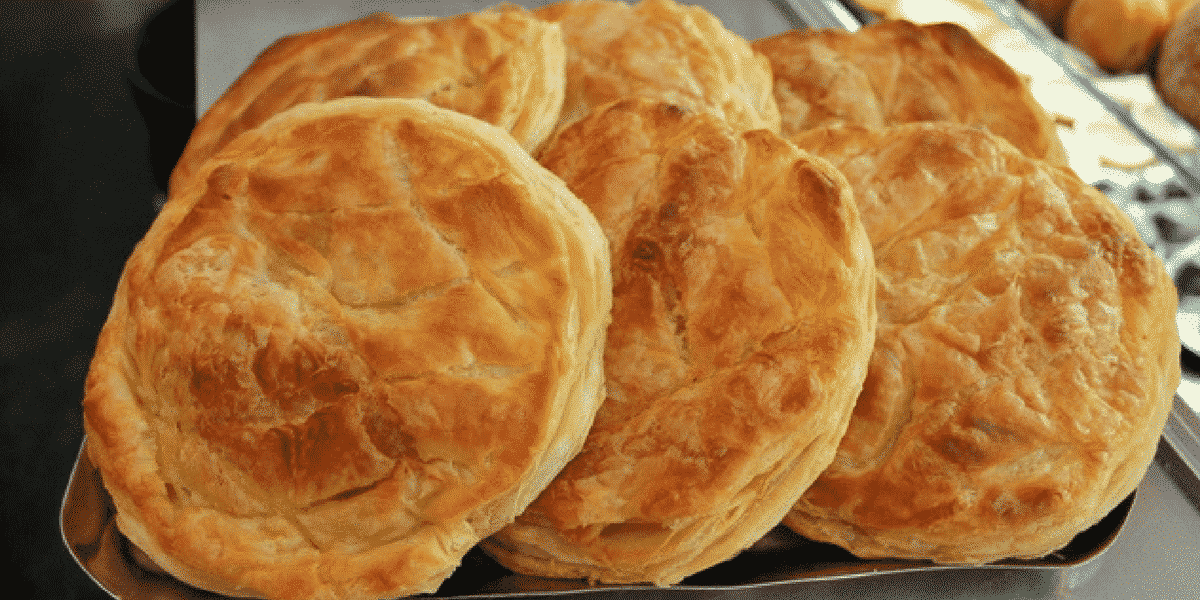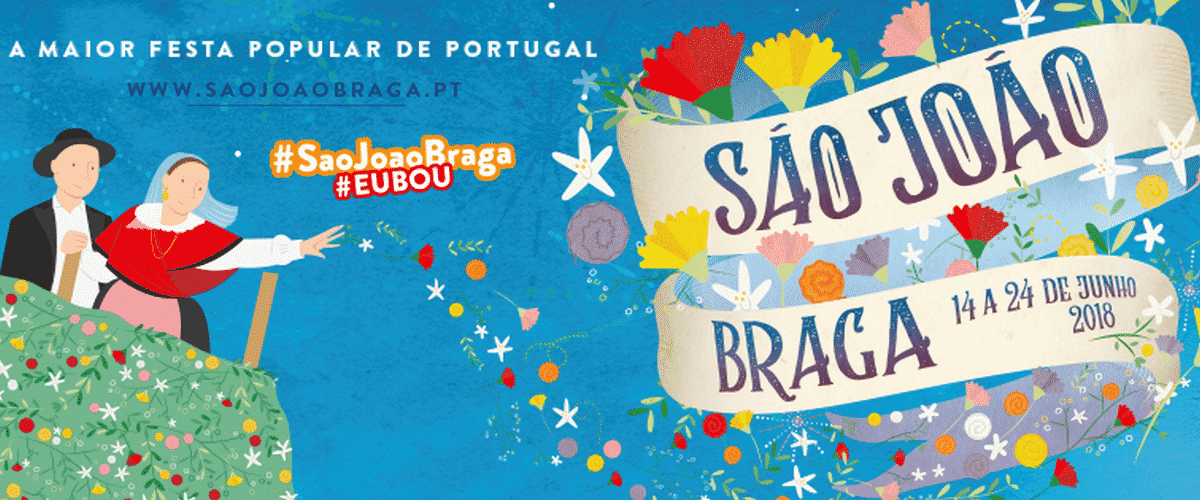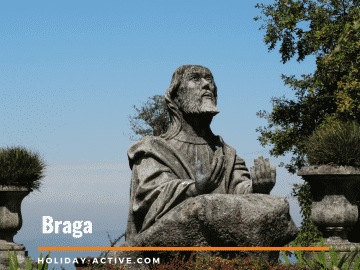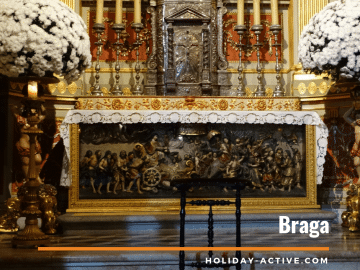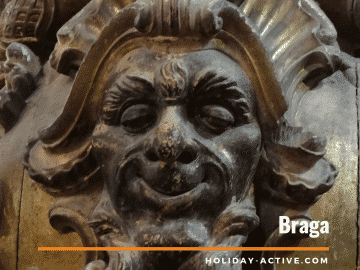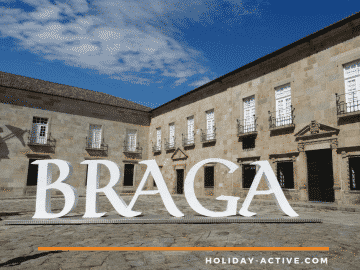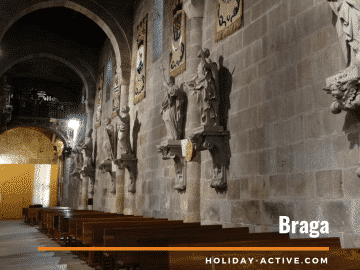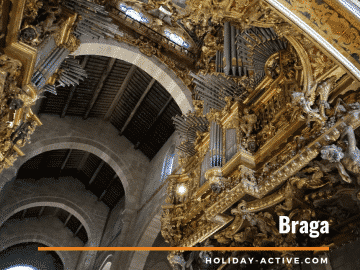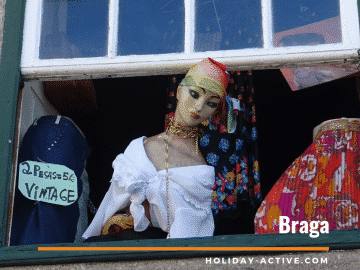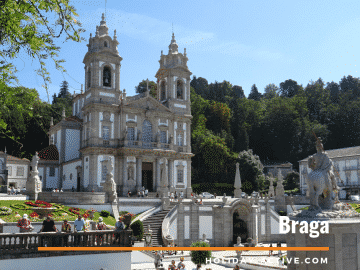Braga
Braga is a lively city, a contrast between the past and the present. One of the oldest cities in the country, it is also one of the most youthful due to the universities that attract a large number of students
Founded in XVI a.C, as Bracara Augusta, in honour of the Roman Emperor Augustus, it was located on one of the main Roman roads in the Iberian Peninsula.
It is also the Portuguese city with the most churches per square/meter having the Holy Week Celebrations and the São João Festival as the highlights in its liturgical and tourist calendar.
What to visit in Braga
Sé de Braga (Braga Cathedral)
Sé de Braga is the oldest Portuguese Cathedral
This cathedral, older than Portugal, gave origin to the popular saying “older than the Braga Cathedral” when referring to something or someone truly old
Also called the Santa Maria de Braga Cathedral it was the first Portuguese cathedral, built several decades before the founding of this country, in the 12th century, by the parents of Portugal’s first King, D. Henrique and D. Teresa.
Preserved within are artistic relics with more than nine centuries of history, including the tombs of D. Henrique and D. Teresa and the Infante D. Afonso, son of D. João I and D. Filipa de Lencastre.
To the original Romanesque style more was added. In the15th century the construction of the entrance porch to the temple was done in a Gothic style, and during the reign of D. Manuel, other decorative elements were introduced. The baroque style is mostly seen in the interior decoration of the altars more so in the gilded woodwork
Sé de Braga: Treasure Museum,
When visiting the Cathedral do not miss the Cathedral’s Treasure Museum, with an extensive collection that covers ceramics, furniture, jewellery and textiles and an 18th-century silver and gold plated custodial set with 450 diamonds.
You also will find the cross that was used in the first mass celebrated in Brazil, taken by Pedro Álvares Cabral.
Biscainhos Museum
The house was ordered by Constantino Ribeiro do Lago, a Knight of the Order of Christ. Construction finished in 1699. The name “Biscainhos” came about as the builders were Basque, artisans from the province of Biscay, that were at the time also working on the Braga Cathedral.
The museum exhibits, on a permanent basis, collections of decorative arts that includes furniture, ceramics, European and Oriental porcelain, glassware, and examples of European and Portuguese watches and clocks.
The garden of Santa Bárbara
In the Historic Center of Braga, the garden of Santa Bárbara consists of geometric designs carved from beds of boxwood. A well-tendered garden, it is an explosion of colour and scent
In the centre, the 17th century fountain with the image of Santa Bárbara, which once belonged to the Convento dos Remedios, and gives its name to the Garden. Framing this space is the Medieval Wing of Paço Episcopal Bracarense.
Porta Nova Arch
An iconic landmark of the city of Braga
Another project of the town architect André Soares. The city expanded engulfing the old city walls, already mostly demolished, and a new door to mark the entrance to the town, was commissioned to replace the old one. The Porta Nova “New Door” was never actually a door but an arch, since the wars were long gone and the need for a door obsolete The expression “Are you from Braga ?” Applied to those who do not close the door behind them comes from this fact. There was no door to close!
Palácio do Raio
It is a great example of Baroque civil architecture, by André Soares
Commissioned, in 1752, by João Duarte Faria, a knight of the Order of Christ and a wealthy merchant. In 1867, it was bought by Miguel José Raio, Viscount of São Lázaro, who named the Palace: Palácio do Raio. He opened the access to the street in front to allow a better view of his house and covered the exterior facade with blue tiles
Subsequently, the Palácio do Raio was acquired by Banco do Minho, which, in turn, resold it, the following year, to the Santa Casa da Misericórdia, who there installed the S. Marcos Hospital.
At the moment it functions as a museum, with a display of paintings, sculptures, garments, documentation and sacred art as well as a room dedicated to the objects used, at the time, in the hospital. It also exhibits the works of the two greatest architects of Braga: André Soares and Carlos Amarante
Arcada
The Arcada or “Largo da Arcada”, is located in Praça da República, the place to gather, socialise and comment on current news
It was here, during the 16th century, that the farm market took place. Its 19 arches served as porches providing shelter for animals and merchandise. Today it houses two of the most emblematic coffee houses in Braga: Vianna Café referenced in literary works of Eça de Queirós and Camilo Castelo Branco and Café Astória
What to visit around Braga
The Monastery of Tibães
The Monastery of Tibães served as a learning centre for architects, carvers, gilders and sculptors, many of them active participants in the construction of the buildings erected during the 17th century. Men respected for their extraordinary contribution to the Portuguese Art.
It has in its interior a collection of sacred art, paintings and sculptures.
The church is an exponent of the Baroque, with works by Manuel Álvares and André Soares.
Around the monastery, an ornate garden with grottos, lakes and a chapel
Sanctuary of Our Lady of Sameiro
At 566 metres of altitude, with a privileged view over the city of Braga, you will find the Sanctuary of Our Lady of Sameiro. It is one of the most visited places of Marian worship in Portugal, second only to the Sanctuary of Fatima, attracting many devotees which has led to the continuous expansion of this religious complex. It consists of a venue for church mass, the Casa das Estampas, the Rector’s House, the Chapel of the Blessed Sacrament, the main church, the crypt, gardens, a restaurant and a wide monumental staircase, at the top of which are the monuments of the Sacred Heart of Jesus and of Our Lady of the Conception.
On December 8, 2004, Pope John Paul II granted the shrine the Golden Rose, in recognition of relevant services rendered to the Church.
Commemorative dates of the Sanctuary of Our Lady of Sameiro are:
The first Sunday of June: The annual pilgrimage of the Archdiocese of Braga, departing from the Braga Cathedral
The third Sunday of August: The statutory pilgrimage which begins in the Sanctuary of Bom Jesus do Monte.
You can either get here by car, bus (nº 23 leaving from Av General Norton de Matos) or by foot, another uphill climb with 265 stairs from the Sanctuary do Bom Jesus.
The Sanctuary of Bom Jesus Monte
A monument full of symbolism and one to be on your list of what to visit in Braga
The Via-Sacra is represented throughout the Sanctuary of Bom Jesus do Monte with 17 chapels divided by the Stairway, Largo do Pelicano, Adro and Terreiro dos Evangelistas
The seemingly unending stairway is heavily adorned in the baroque style. Each landing is decorated with statues. Pilgrims are encouraged to climb the 577 stairs, encountering a theological symbolism contrasting earthly senses with the virtues of the spirit. Five statues represent the senses with water spurting from the eyes (vision), ears (hearing), mouth (taste), nose (smell) and finally tact, holding an ewer. The fountains of virtues represent faith, hope and charity.
On the final landing (Adro), escorting you to the Basilica are eight biblical figures responsible for the Condemnation of Jesus.
Next to the Church, there is the Museum of Confraria with its collection of religious pieces and a Library founded in 1918.
This place deserves to be visited at leisure, if not to immerse yourself in trying to figure out the symbolism at least to give you time to climb up all these stairs.
The Bom Jesus Funicular
The Bom Jesus Funicular, in Braga, was inaugurated in 1882. It is the only one in the Iberian Peninsula and the oldest one still working
It works by counterweights. The two funiculars are connected by a cable. The one at the top of the hill has its tanks filled with water while the one at the bottom has its tanks emptied. When the driver releases the brakes, the difference in weight makes the funicular on the top slide down and the one on the bottom rise up. Simple engineering!
The Gardens of Bom Jesus
The extensive Gardens of Bom Jesus in Braga with its lush trees and many trails has the making of a well spent afternoon. Stroll through winding paths with caves, coretos, picnic areas and even a small lake where you can put your rowing practice to good use on board a quaint and colourful boat
What to taste
Stop at ‘Frigideiras do Cantinho’ a house established 1796 that came up with the recipe of the famous frigideiras and has been selling them ever since, made of minced veal tucked into puff pastry, and immortalized by two great Portuguese authors Júlio Dinis e Camilo Castelo Branco.
Festivities in Braga
Semana Santa (Holy week): Braga celebrates the holy week in solemn splendour. A week before Easter the city is decorated in violet sheets and flowers and people gather to watch the religious processions
São João (Saint John): Although Saint John Holiday is on the 24th of June, the town starts preparing for it almost two weeks in advance, with events such as traditional music and dance. On the night of 23 June, the people come to the street to celebrate with plastic hammers and leeks. Much dancing, drinking and eating is done and fireworks end the day.
Braga Romana (Roman Braga): Usually during the last weekend of May the city honours its Roman past by setting up street fairs, where people dress up as Romans to sell art objects and other souvenirs.
Braga’s traditional costume
The traditional costume of Cávado Valley is the most representative of the city of Braga, although it is not the only one. It is characterized by a vivid red cape for the young girls and dark blue or black for the married or senior ladies.
Black skirts, fully rounded and decorated in satin or velvet on top of which an apron of vivid colours catches the eye. A white handkerchief covers the head and tied to the waistband the “request handkerchiefs” embroidered with poems or love phrases.
Exquisite gold jewellery adorns the ears and neck and are part of the bride’s dowery.
How to get to Braga
There is a regular train service as well as good road access to Braga, which make it an excellent day trip from Porto
For more information check the map below
What to visit in Braga: Handpicked Tours
We use affiliate links which means we get a small commission if you book through them. This does not in any way affect the end price but helps us keep this site updated. We selected what to visit in Braga with the places we believe to be the most relevant and with an insider’s knowledge.
Enjoy Portugal with holiday-active.com and make the most of your holidays in Braga
What to visit in Braga, one of our oldest cities

 English
English

